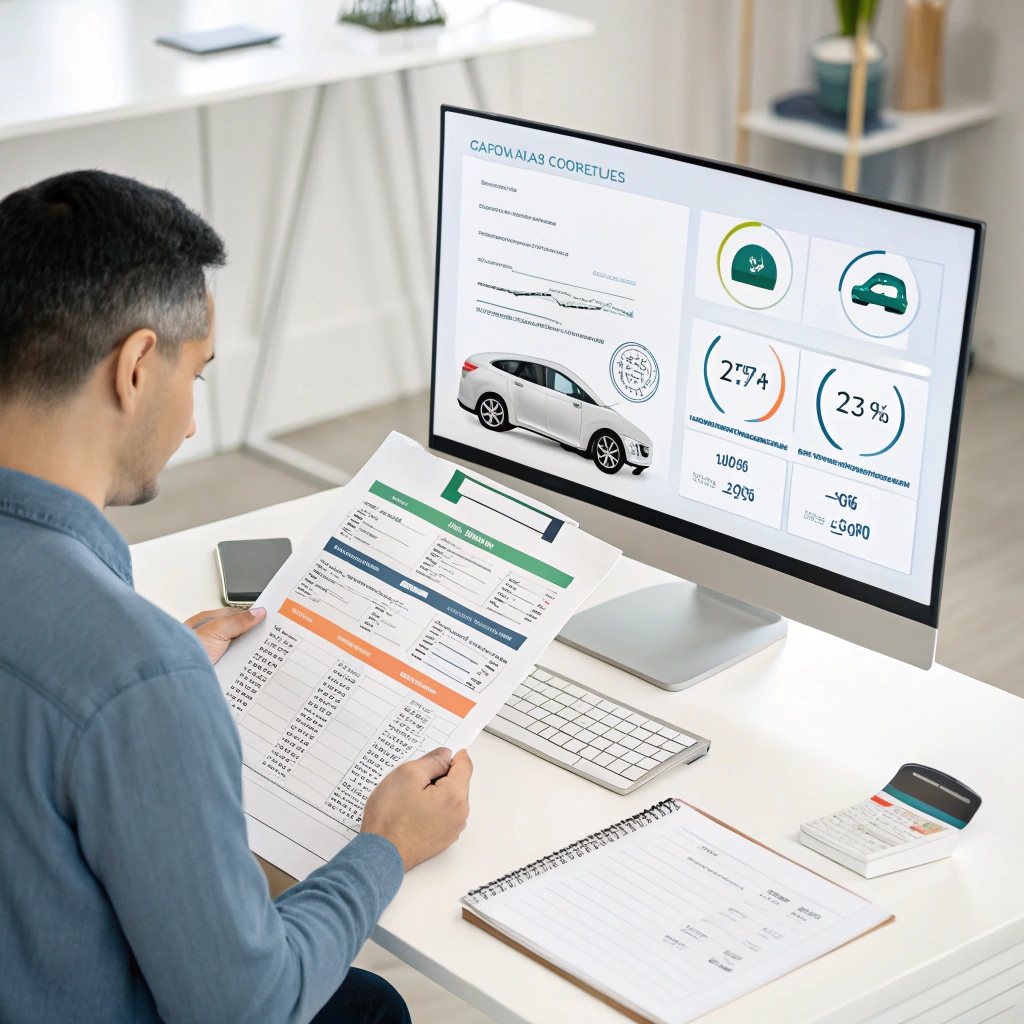Choosing the right auto insurance deductible is a decision that can significantly impact your monthly premiums, financial safety net, and overall peace of mind. Yet, for many drivers, the concept of deductibles remains confusing. What exactly is a deductible? How does it affect your insurance costs and coverage? Should you opt for a high or low deductible? In this comprehensive 2,000-word guide, we’ll break down everything you need to know about auto insurance deductibles so you can make an informed decision that suits your lifestyle and financial situation.
What Is an Auto Insurance Deductible?
An auto insurance deductible is the amount of money you agree to pay out-of-pocket before your insurance coverage kicks in for a claim. For example, if you have a $500 deductible and your covered claim costs $2,000, you’ll pay the first $500, and your insurance provider will cover the remaining $1,500.
Deductibles typically apply to comprehensive and collision coverage but not to liability insurance, which covers damage to other people or their property.
Types of Auto Insurance Deductibles
There are primarily two types of auto insurance deductibles:
1. Collision Deductible
This applies when you’re in an accident with another vehicle or object, such as a tree, pole, or fence.
2. Comprehensive Deductible
This covers non-collision incidents like theft, vandalism, natural disasters, or hitting an animal.
Some insurers also offer:
- Glass Deductibles: For windshield repair/replacement
- Disappearing Deductibles: Deductibles that reduce over time with safe driving
How Deductibles Affect Your Premium
There’s an inverse relationship between your deductible and your insurance premium:
- Higher Deductible = Lower Premium
- Lower Deductible = Higher Premium
Raising your deductible can reduce your monthly premium by 10–40%, but it also increases your financial burden if you file a claim.
Factors to Consider When Choosing a Deductible
Choosing the right deductible isn’t one-size-fits-all. Consider the following factors:
1. Your Financial Situation
Can you comfortably afford a $1,000 out-of-pocket expense after an accident? If not, a lower deductible may be safer.
2. Your Driving Record
If you have a clean driving history and rarely file claims, a higher deductible might save you money in the long run.
3. Vehicle Value
Older or lower-value cars may not need low deductibles, as the cost of repairs might not justify filing a claim.
4. Risk Tolerance
Are you okay with paying more out-of-pocket in exchange for lower monthly premiums?
5. Claim Frequency in Your Area
Live in an area with high theft or accident rates? A lower deductible may be more practical.
Pros and Cons of High vs. Low Deductibles
| Deductible Type | Pros | Cons |
|---|---|---|
| High ($750–$2,000) | Lower premiums, long-term savings | Higher upfront cost in accidents |
| Low ($100–$500) | Lower out-of-pocket expenses | Higher monthly premiums |
Real-World Example: High vs. Low Deductible
Scenario: Two drivers, Anna and Ben, both have comprehensive and collision insurance.
- Anna: Chooses a $1,000 deductible and pays $80/month
- Ben: Chooses a $500 deductible and pays $120/month
After 1 year:
- Anna pays $960 in premiums
- Ben pays $1,440 in premiums
Savings: Anna saves $480/year, but if both are in an accident costing $2,000:
- Anna pays $1,000 (total $1,960 including premiums)
- Ben pays $500 (total $1,940 including premiums)
If no accident occurs, Anna benefits. If an accident happens, Ben pays slightly less. It’s a risk-reward tradeoff.
How to Change Your Deductible
You can adjust your deductible by contacting your insurer. Changes can typically be made mid-policy, but some companies may require a new policy term. Keep in mind:
- Some deductibles are fixed by state law or policy type
- Changing your deductible may affect eligibility for discounts

Deductibles and Claims: What You Need to Know
When you file a claim:
- The deductible is subtracted from your payout
- You pay the deductible amount directly to the repair shop (or it’s withheld from the insurance check)
- For partial damages, if repairs cost less than the deductible, insurance pays nothing
Tips to Minimize Out-of-Pocket Deductible Costs
- Emergency Fund: Always have savings to cover your deductible
- Bundle Policies: Multi-policy discounts can reduce overall premiums
- Telematics Discounts: Safe driving trackers may help offset premium hikes
- Claim-Free Discounts: Avoid small claims that could raise premiums
- Shop Around: Compare policies with different deductible options annually
Should You File a Claim or Pay Out-of-Pocket?
If repair costs are close to or below your deductible, it’s often better not to file a claim. Filing small claims can:
- Increase your premiums
- Disqualify you from discounts
- Affect your claims history
Evaluate the situation:
- Minor Damage (< $500): Consider paying out-of-pocket
- Major Damage (> $1,000): File a claim if you can’t cover the costs comfortably
Frequently Asked Questions (FAQs)
Q: Can I have different deductibles for different coverages? Yes, many insurers allow separate deductibles for collision and comprehensive.
Q: Is zero deductible insurance worth it? It provides peace of mind but comes with significantly higher premiums.
Q: Will my deductible apply if the accident wasn’t my fault? If the other driver is at fault and insured, their policy should cover your costs. If not, your insurer may step in—but you may still pay your deductible initially until reimbursement is secured.
Q: Are deductibles required in all states? No. Some states mandate specific coverage types but allow flexibility in deductible amounts.
Conclusion: Choose Smart, Drive Safe
Your auto insurance deductible is more than just a number—it’s a financial decision that affects how you navigate risk and recovery. By understanding how deductibles work and assessing your driving habits, vehicle value, and budget, you can strike the right balance between affordability and protection. Whether you prefer lower monthly premiums or reduced out-of-pocket expenses after an accident, the right deductible should align with your broader financial plan.


Leave a Reply